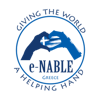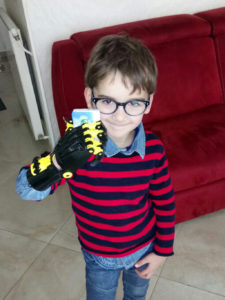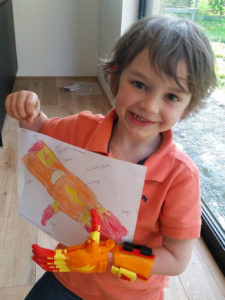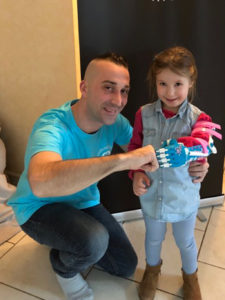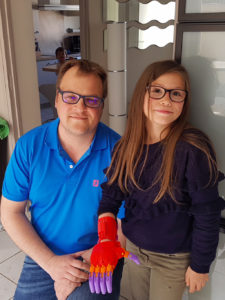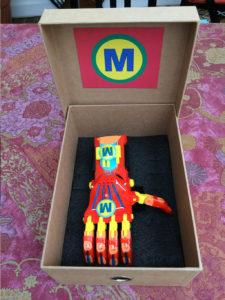Our goal
and History
The e-NABLE Community is an amazing group of individuals from all over the world who are using their 3D printers, their designing skills and their spare time, to create free 3D printed hands and arms for those in need of an upper limb assistive device.
All the e-NABLE devices are free of charge for the final recipient. All the costs are covered by the maker who has the responsibility to build, assemble and give the device to the recipient.
Who can have an e-Nable Device?
If you are missing your fingers or some of them and still have a functional wrist that can bend at least 30 degrees in either direction as well as most or all of their palm, you can have a wrist-powered device. For those that do not have a functional wrist or a palm, the e-NABLE Community has created a few designs that are able to function through the bending of the elbow instead of the wrist. For these designs to work, recipients will need a functional elbow that can bend easily and who have partial to most of their forearm.

How everything started?
In 2011 Ivan Owen created a metal functional puppet hand to wear at a convention.
This device was posted on Youtube where a carpenter named Richard from South Africa, saw and reached out to Ivan. He had lost his fingers in a woodworking accident and asked for a replacement finger. This whole process lasted about a year and the progress was posted on the Internet.
This led to a mother of a 5-year-old boy named Liam to ask for a full set of fingers for her son, who was born with no fingers on his right hand. Ivan started researching prosthetic devices and stumbled upon the Corporal Coles hand, that was created in the early 1800’s by an Australian dentist named Dr. Robert Norman.
After creating the first prototype for Liam, Ivan realized that he would quickly outgrow the hand and started researching the use of 3D printing to create the next version. He created a basic model for Liam’s hand and decided instead of patenting the design for this new hand to publish the design files as open-source and public domain, so people could download and print these devices for anyone that needed one too – anywhere in the world. In January 2013, the files went live on Thingiverse and on July of 2013, Jon Schull, a professor at RIT, started a Google+ group and created a map for makers to share their locations so that people who were seeking a hand could find the closest volunteer!
Within that first year – the e-NABLE community grew from 100 members to over 3000. They created over 750 hands for people around the world.
Within another year – they have more than doubled to nearly 7000 members and approximately 2000 devices created and gifted to individuals in over 45 countries.
Today anyone can find numerous forum, groups, social media accounts that are involved in the e-Nable community and each of them has to offer something different such as: assembly advices, measuring techniques, new designs, resources, services, inspiration.
The community is the place where everyone can freely communicate with each other.
The community is the place where families find hope for their children.
The community is the place where the volunteers come to find out how they can join the global community and use their 3D printers to make a difference.

